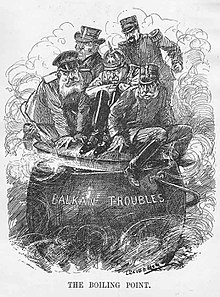World War I Week and Due Date Week
Nov. 28-29---Thanksgiving Break Review Worksheet Due for all students with a C or lower grade.
1. World War I Causes--- WWI Ch. 13 sec. 1 (Get notes by clicking title)
2. Whose to Blame Activity? (Click Title to get hand-out)
**WWI -Quick Writes #1 (on hand-out link above) added to Imperialism Quick-Writes
**Complete Conclusion (C.) at bottom of page in 1 paragraph. Write it directly on same page with your quick-writes.
Nov. 30-Dec. 1--(Extra-Credit Due Dec. 1)
1. WWI Battles Activity-Prediction Cycle Map -- http://www.pbs.org/greatwar/maps (WWI Web-site)
2. Major Turning Points of WWI (tentative)
Dec. 2/5 (Extra Credit Due Dec .2)
1. Condlude Prediction Cycle Maps
2. Major Turning Points of WWI
Final Exam Study Guide Part II (click on title to access worksheet) Due on Day of Final Exam along with Block Assessment Review Worksheet
Period 2 and 4 Final Exam December 13
Period 3 Final Exam December 14
Extra-Credit Reminder: Syllabus (click on syllabus link to the left)
Save These Directions: Extra-Credit For Semester Due Dec. 1-2 (Check your odd or even day)
Movie Choices are on the Syllabus...
Nov. 28-29---Thanksgiving Break Review Worksheet Due for all students with a C or lower grade.
1. World War I Causes--- WWI Ch. 13 sec. 1 (Get notes by clicking title)
2. Whose to Blame Activity? (Click Title to get hand-out)
**WWI -Quick Writes #1 (on hand-out link above) added to Imperialism Quick-Writes
**Complete Conclusion (C.) at bottom of page in 1 paragraph. Write it directly on same page with your quick-writes.
Nov. 30-Dec. 1--(Extra-Credit Due Dec. 1)
1. WWI Battles Activity-Prediction Cycle Map -- http://www.pbs.org/greatwar/maps (WWI Web-site)
2. Major Turning Points of WWI (tentative)
Dec. 2/5 (Extra Credit Due Dec .2)
1. Condlude Prediction Cycle Maps
2. Major Turning Points of WWI
Final Exam Study Guide Part II (click on title to access worksheet) Due on Day of Final Exam along with Block Assessment Review Worksheet
Period 2 and 4 Final Exam December 13
Period 3 Final Exam December 14
WWI STANDARDS/OBJECTIVES: CH. 13
6.1. M. The arms race led to a concentration on large armies and the ability to mobilize quickly for war. Militarism was a policy that came from glorifying military power and maintaining an army prepared for war. (364) |
6.2. A. Growing international rivalries led the nations to make military alliances. Ironically, this Alliance system was to keep peace in Europe. (364-365) |
6.3. I. Imperialism and the competition among European nations over colonial holdings in Asia and Africa fueled rivalries. (363) |
6.4. N. Many people of Europe joined groups to work for peace. A result of these groups is the developing force of a unifying movement known as Nationalism. (363) |
6.5. SPARK: The Balkan Peninsula was home to an assortment of ethnic groups with nationalist and ethnic disputes. The Balkans was known as the “powder keg” of Europe. (365-366) |
6.6. National goals and interest combined with the complex system of alliances divide European nations between the Central Powers and the Allies. |
6.7. One European nation after another was drawn into a large and industrialized war that resulted in many casualties on many battlefronts. WWI battles spread to several continents and required the full resources of many governments, including colonies. (367-371) |
6.8. Germany’s attacks on passenger ships and a German plot bring the US into the conflict. (373-376) |
6.9. WWI becomes a total war, and governments take control of national economies. (373-376) |
6.10. In 1917, the United States entered the US on the side of the Allies. War-weary Russians no longer supported the Russian Czar and the war; Communists seized the Russian government. (376, 390-394) |
6.11. After winning the war, the Allies dictated a harsh peace settlement that left many nations feeling betrayed. (380-383) |
6.12. After The Great War, peace was uncertain because the treaty satisfied no one. The war had made a major impact on the world. (382-383) |



No comments:
Post a Comment